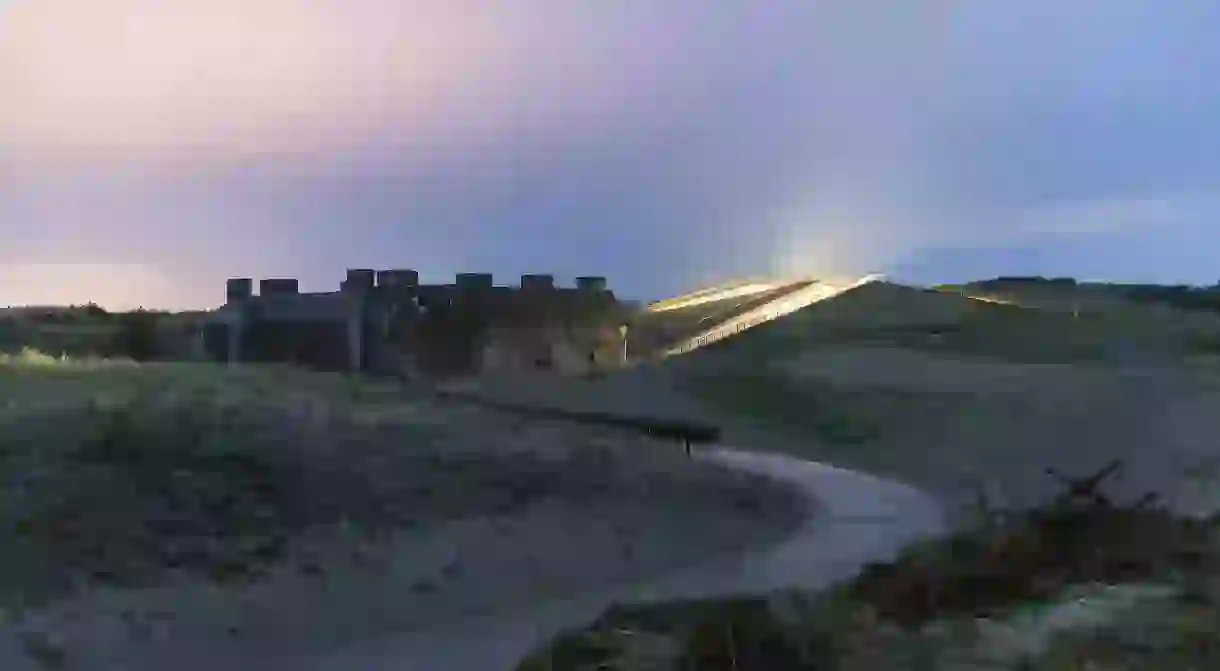Is a Swastika Built Into the New "Hidden" WWII Museum?

The design of the new “hidden” WWII museum off the coast of Denmark seems innocuous enough, if not a celebrated architectural feat by Bjarke Ingels Group (BIG). But some question whether the creation is insensitive, if not downright offensive.

An old German World War II bunker in Denmark was recently transformed into a subterranean museum built directly into the neighboring sand dunes. While the light-filled interior is largely invisible from the outside, one exterior trait has some cringing: aerial views of the bunker-turned-museum show an outline that eerily resembles a swastika.
Dezeen recently reported that its readers have lashed out over the design, calling it offensive and insensitive. “Anywhere else this wouldn’t look like a swastika but on a site like this? You have to be a little bit more careful,” commented Jack Treber. Another reader, HeywoodFloyd, defends the firm: “I mean, technically it’s not a swastika it’s a pinwheel, which is, of course, a commonly accepted architectural parti. Really, this may be some of BIG’s best work and it’s getting hijacked by the swastika reference,” reports Dezeen.

Symbols, like language, change overtime and while the swastika symbol did not historically represent fascism and the Nazi regime, it sure resonates as such today. Whether it’s a pinwheel or a swastika, why incorporate such a controversial symbol into a commemorative site? Especially when that symbol was systematically used during WWII (and thereafter) as a sign of repressive power, racism, and tragedy?
According to project architect Bjarke Ingels, the architecture of the museum is “the antithesis to the World War II bunker,” because it strategically incorporates a sense of openness and light inside, representing an “open oasis in the sand.” And while this is all true, the visible portion of the exterior is controversial, especially upon aerial observation. Broken swastika or pinwheel, re-appropriated symbol or not, one thing is clear: the design was definitely intentional.















